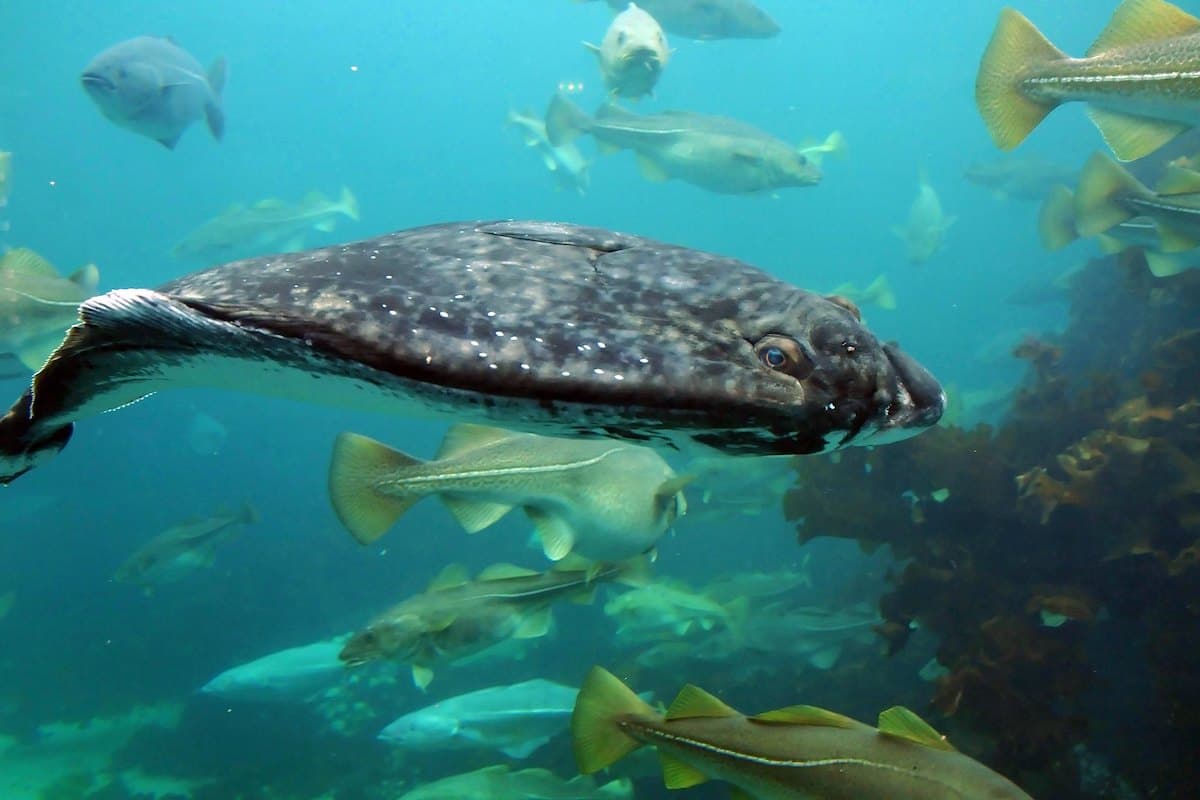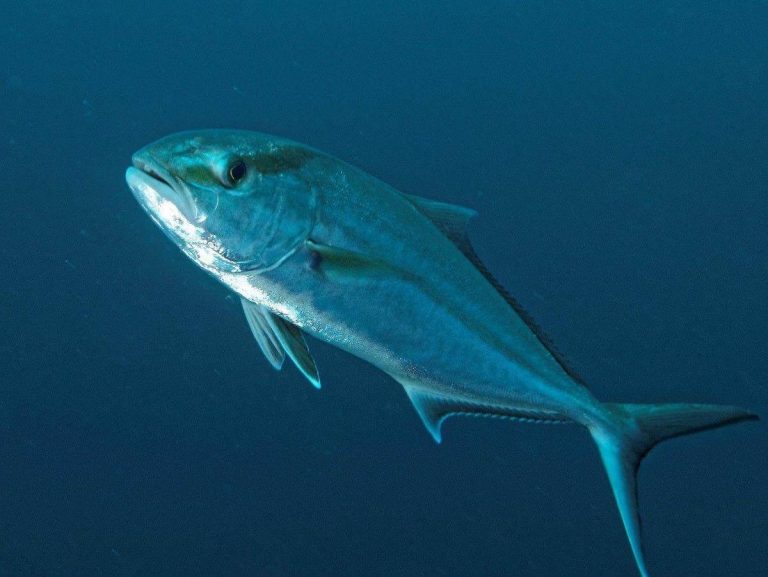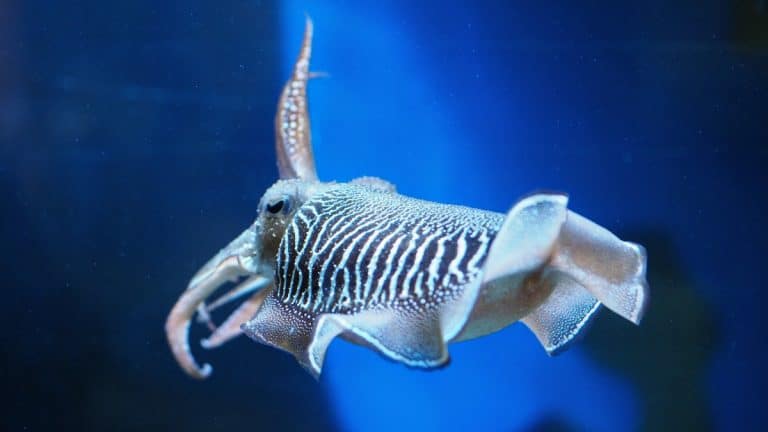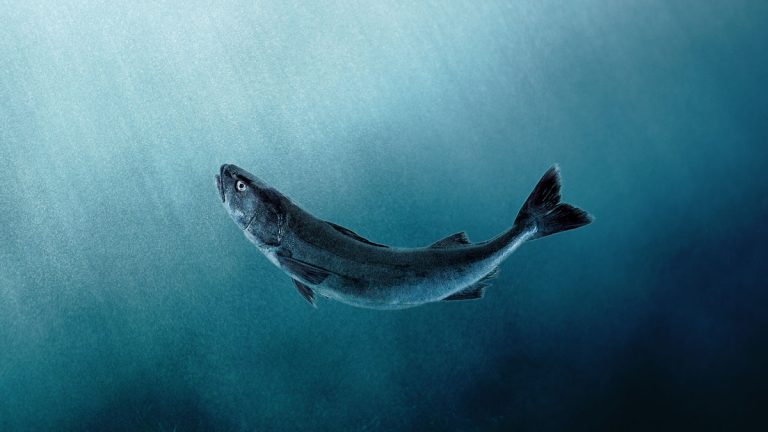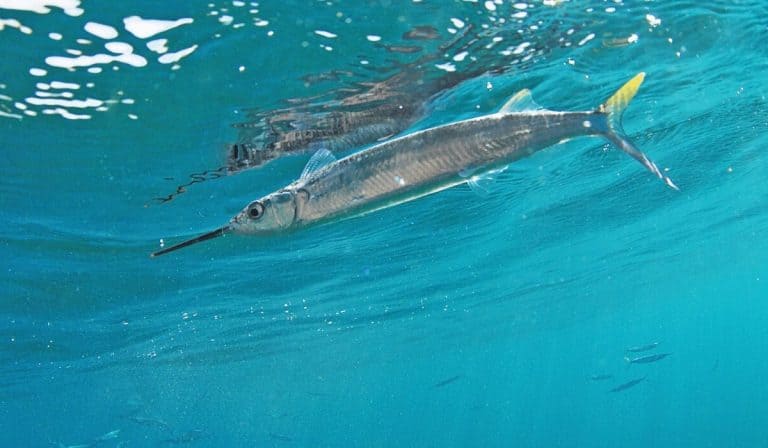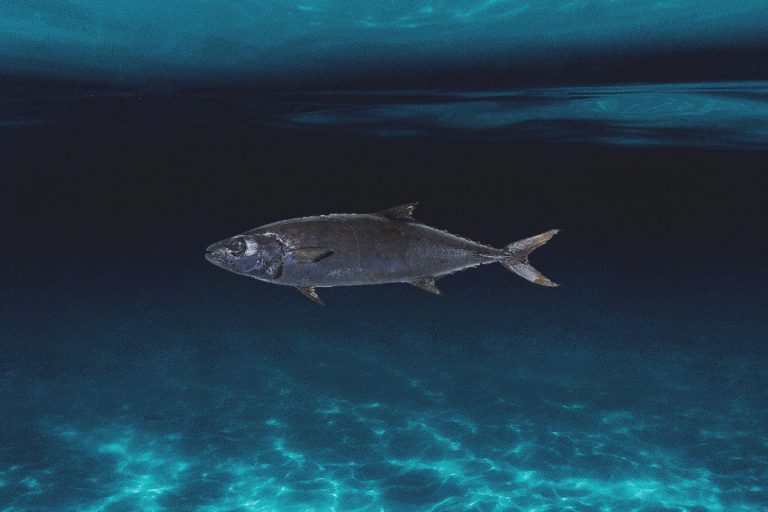Source: Wild
Mercury Risk: Low (Atlantic fluke), Moderate (California & Pacific halibuts)
PCB WARNING
The term hirame can refer to just about any white-fleshed, horizontally oriented, bottom-dwelling fish: halibut, sole, flounder, fluke, turbot, and others. The key to enjoying hirame (or any flatfish sushi) responsibly is to discern which particular fish is on your plate.
The best option we can hope for here in the United States is Pacific halibut (Hippoglossus stenolipus) from Alaska. With well-enforced regulations and thoughtful quota limits, this fishery has been a trendsetting example for progressive management and sustainable harvesting. That being said, decreasing population levels and increasing bycatch, unintended species and juveniles that are caught and discarded, are beginning to become issues in this fishery. The actual term for halibut in Japanese is ohyo.
If the flatfish is not Alaskan halibut, the issue starts to get more complicated. First of all, the names flounder and sole are thrown around very liberally and often can be misleading. True sole occurs only in the Atlantic. This doesn’t prevent us from seeing Pacific Ocean “sole” for sale in the seafood market or finding “flounder” on a menu when what’s actually being served is sole or turbot. There are even large-scale fisheries in the Pacific that target petrale and rex “sole,” both of which are actually flounders. The technical Japanese term for flounder is karei.
The presence of California halibut on the West Coast doesn’t make the situation any simpler. “California halibut” (Paralichthys californicus) is actually a flounder, but nonetheless it is marketed as halibut. A large amount of California halibut is caught on longlines or bottom trawled (caught in large nets dragged along the sea bottom), but a portion of the fishery employs set nets that catch fish by their gills and are known to entangle and kill other animals.
The big problem with many sole and flounder fisheries is the methods used to catch the fish. These flatfish are generally bottom-trawled: A weighted net is dragged across the seabed to snare as many flatfish as possible. Unfortunately, this kind of fishing causes a great deal of habitat disruption and can harm or kill other animals. This practice is especially troublesome in the Atlantic as the populations of many affected species are already flagging.
Which type of fish is best for hirame (flatfish sushi)?
So here’s a quick cheat sheet to help decipher the thorniest parts of the hirame issue:
Pacific halibut from Alaska is a good choice due to positive management and responsible fishing methods. Feel free to enjoy this species as a staple item when you visit the sushi bar. This fish is rarely used for sashimi and nigiri, but is commonly offered in cooked dishes.
Pacific flounder (or sole, or plaice, or turbot) is the runner-up. These species are generally bottom-trawled, but population levels seem to be healthier than in the Atlantic. This fishery is in delicate shape and calls for some moderation.
California halibut caught with a hook and line, or even a bottom trawl, is a reasonable choice, but not a great one.
Chilean flatfish are also beginning to enter the sushi industry for use as hirame. Unfortunately, very little is known about these populations and the way in which they are managed. It is best to be cautious until more is known.
California halibut caught with a set gill net doesn’t merit our support. This fishery has a large amount of bycatch; marine mammals, such as the harbor porpoise, and numerous seabirds are often killed when they get entangled in these nets.
Atlantic sole (or fluke, or plaice) and Atlantic halibut are unsustainable choices due to destructive fishing practices and low population levels. If your sushi restaurant offers Atlantic flatfish sushi as their hirame, try to order a more sustainable white fish, such as US farmed striped bass or barramundi. Alaskan gindara is also an excellent choice when available.
It’s a complex issue, but with a few well-aimed questions we can recognize what’s being offered as hirame and choose whether or not we want to support it.
Casson Trenor
Casson Trenor is a frequent commentator on sustainable seafood issues. He has been featured in regional, national, and international media outlets, including CNN, NPR, Forbes, New York Times, Boston Globe, Christian Science Monitor, San Francisco Chronicle, Los Angeles Times, Seattle Times.

